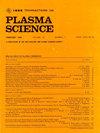Development of a Nanosecond-Level High-Voltage Bipolar Square Wave Generator for Insulation Testing of SiC Device Packaging
IF 1.5
4区 物理与天体物理
Q3 PHYSICS, FLUIDS & PLASMAS
引用次数: 0
Abstract
Aiming at the insulation testing requirements for high-voltage silicon carbide (SiC) device packaging under bipolar square wave voltage conditions, this article proposes and develops a novel nanosecond-level high-voltage bipolar square wave generator based on cascaded half-bridge submodules. Under a typical capacitive load, the generator achieves a peak-to-peak voltage of 10 kV, an adjustable repetition frequency from dc to 50 kHz, and a duty cycle ranging from 0% to 100%, with a rise time compressed to approximately 39 ns. By combining a series-isolated power supply design with common-mode filtering, the proposed approach significantly reduces common-mode interference under high用于SiC器件封装绝缘测试的纳秒级高压双极方波发生器的研制
针对高压碳化硅(SiC)器件封装在双极方波电压条件下的绝缘测试要求,提出并研制了一种基于级联半桥子模块的纳秒级高压双极方波发生器。在典型的容性负载下,发电机的峰值电压为10 kV,重复频率从dc到50 kHz可调,占空比从0%到100%,上升时间压缩到约39 ns。通过将串联隔离电源设计与共模滤波相结合,该方法显著降低了高dv/dt条件下的共模干扰,确保了驱动级的高压隔离,提高了电磁兼容性。与传统的脉冲拓扑结构如Blumlein线、线性变压器驱动器(LTDs)和Marx发生器相比,所提出的发生器具有平顶波形质量、灵活的脉宽/占空比调制和纳秒级上升沿等优点。从而为研究高压SiC器件的局部放电和绝缘老化机理提供了更为精确、可靠的实验平台。
本文章由计算机程序翻译,如有差异,请以英文原文为准。
求助全文
约1分钟内获得全文
求助全文
来源期刊

IEEE Transactions on Plasma Science
物理-物理:流体与等离子体
CiteScore
3.00
自引率
20.00%
发文量
538
审稿时长
3.8 months
期刊介绍:
The scope covers all aspects of the theory and application of plasma science. It includes the following areas: magnetohydrodynamics; thermionics and plasma diodes; basic plasma phenomena; gaseous electronics; microwave/plasma interaction; electron, ion, and plasma sources; space plasmas; intense electron and ion beams; laser-plasma interactions; plasma diagnostics; plasma chemistry and processing; solid-state plasmas; plasma heating; plasma for controlled fusion research; high energy density plasmas; industrial/commercial applications of plasma physics; plasma waves and instabilities; and high power microwave and submillimeter wave generation.
 求助内容:
求助内容: 应助结果提醒方式:
应助结果提醒方式:


